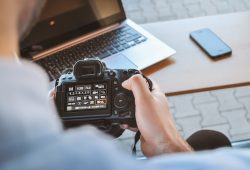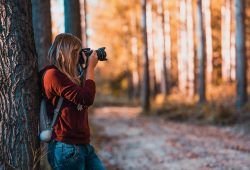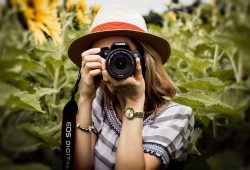However, I think I have something to add to the discussion of how people assemble and use their cameras in unique ways
 Posted On
Posted On
Photography is a ubiquitous part of our lives, capturing our most cherished memories and defining how we view ourselves and the world around us. From powerful, high-definition DSLRs to lightweight, smartphone cameras, there has arguably never been a better or more convenient time to be an amateur photographer. But what if, amidst the sea of cookie-cutter devices, there is an untapped artistic potential just waiting to be unlocked by embracing a more unconventional approach? In this discussion, I’d like to shed some light on the diverse ways people assemble and use their cameras in novel and unique ways.
The DIY Spirit: Building Your Camera from Scratch
One exciting trend in the realm of camera technology is the do-it-yourself (DIY) movement. Enthusiastic photographers around the world are setting out to design and build their own cameras tailored to their specific visions. One such example is the creation of pinhole cameras, where light passes through a tiny hole and onto photosensitive material, generating a strikingly distinct image. These DIY tools grant artists maximum control over their work since they’re able to customize various aspects such as focal length or field of view.
Additive to this customization-driven approach is the emergent wave of 3D printed cameras. With almost limitless possibilities for shape and design, 3D printing allows for even greater accessibility into the DIY spirit. An added benefit is that these home-made devices can render images at a lower cost.
The lenses play an equally important role. Some photographers choose vintage or antique lenses to achieve a certain aesthetic flavor in their work or modify existing lenses creatively for capturing images that break away from conventional expectations.
Multispectral Imaging & Beyond
More elaborate experiments with camera assembly reside within multispectral imaging, where photographs are taken using different wavelengths of light outside the visible spectrum (such as infrared or ultraviolet). By modifying their camera sensors or employing specialized lenses, photographers can explore mysterious landscapes that elude unaided human sight. This technique has numerous scientific applications and can also yield genuinely captivating images that tell stories evocative of otherworldliness.
Another noteworthy method is light-field photography which captures light traveling in every direction through every point in space, allowing manipulation of focus and depth-of-field after taking the photo! Though not yet practical for widespread use among amateur photographers, this technology illustrates the potential unforeseen outcomes of delving into unique camera assemblies.
Capturing Sounds: The Sonic Side of Photography
A particularly astounding instance lies not in visual experimentation but rather auditory realms. Harnessing contact microphones attached to their cameras (typically placed near the shutter), some artists merge photography with soundscapes creating an immersive sensory experience. By recording and amplifying soft mechanical sounds generated inside their devices as photographs are taken, they emphasize process and enrich our understanding of what it means to capture a moment in time.
In summary, though we live at a time when picture-perfect images are perpetually available at our fingertips, something unique and fascinating happens when we allow ourselves room to experiment with and create truly singular photographic experiences. Through methods like building custom cameras or lenses, exploring alternative imaging techniques such as multispectral photography, or stepping outside traditional boundaries with sound capture approaches like contact microphone usage — each one broadens our understanding.
Meanwhile, we must remember there still exists an alluring beauty in stripping everything away entirely – revealing only those fundamentals which bind us throughout history: light and perspective. So whether you are an experienced photographer or brand new to this fascinating world—do not hesitate to experiment with these techniques—because you may just uncover new dimensions previously hidden from sight.


